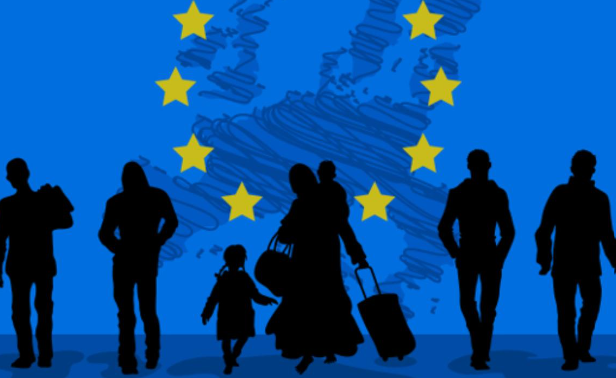Europe continues to grapple with a significant migration crisis, as the number of people attempting to reach its shores remains high despite efforts to stem the tide. Last weekend alone, over 700 migrants crossed the Channel from France to England, raising the total number of arrivals in the UK this year to 18,342—a 13% increase from 2023. Meanwhile, more than 500 migrants arrived on the Italian island of Lampedusa, highlighting the ongoing challenges faced by European nations.
The diversity of those arriving in Lampedusa underscores the complexity of the situation. Migrants from countries as varied as Egypt, Bangladesh, Pakistan, Ghana, Gambia, Malaysia, Nigeria, Liberia, and Syria are making perilous journeys across the Mediterranean. Many set out from Libya or Tunisia, with the latter being a more affordable but still dangerous route. The cost of crossing ranges from £500 to £7,000, depending on the point of departure and the smugglers involved.
This wave of migration reflects broader global trends. According to Stephen Smith, an American academic, it is often the young African middle class—not the poorest—who are migrating, driven by the desire for greater personal growth and the frustration with the “rule of elders” in their home countries. Smith’s analysis suggests that migration from Africa is likely to increase significantly in the coming decades.
But it is not only Africans who are seeking a new life in Europe. Increasing numbers of migrants from South Asia, particularly from Bangladesh, are making the journey. Italy has already seen nearly 40,000 arrivals this year, with Bangladeshis comprising the largest group. The recent political upheaval in Bangladesh, including widespread protests and the ousting of Prime Minister Sheikh Hasina, has exacerbated the situation, leading many to flee the country.
The European Union has been working to contain this exodus by signing agreements with several countries, including Egypt, Tunisia, Libya, Mauritania, and Lebanon, hoping these nations will help curb the flow of migrants. While the number of arrivals has decreased slightly compared to last year, tens of thousands still manage to reach Europe, often paying large sums to well-organized criminal gangs who control the smuggling routes.
These criminal networks have proven resilient, and despite efforts to disrupt them, they continue to thrive. According to the Global Initiative against Transnational Organized Crime, a single people-smuggling gang can earn up to $1 million (£780,000) a month, making it a highly profitable enterprise. Unlike the drug trade, the risks associated with human smuggling are borne by the migrants themselves, who face tremendous dangers during their journey.
European leaders, including British Prime Minister Keir Starmer and Italian Prime Minister Giorgia Meloni, have acknowledged the need to address the criminal networks behind the smuggling operations. However, breaking up these gangs is a daunting task, as new groups quickly emerge to fill the void left by those dismantled.
Despite the risks and challenges, many migrants remain undeterred. For them, Europe represents hope and opportunity, and they are willing to face significant dangers to reach its shores. The EU’s agreements and efforts to combat smuggling may slow the flow, but they are unlikely to stop it entirely. The migration crisis is a complex issue that will require sustained and multifaceted efforts to address effectively.








